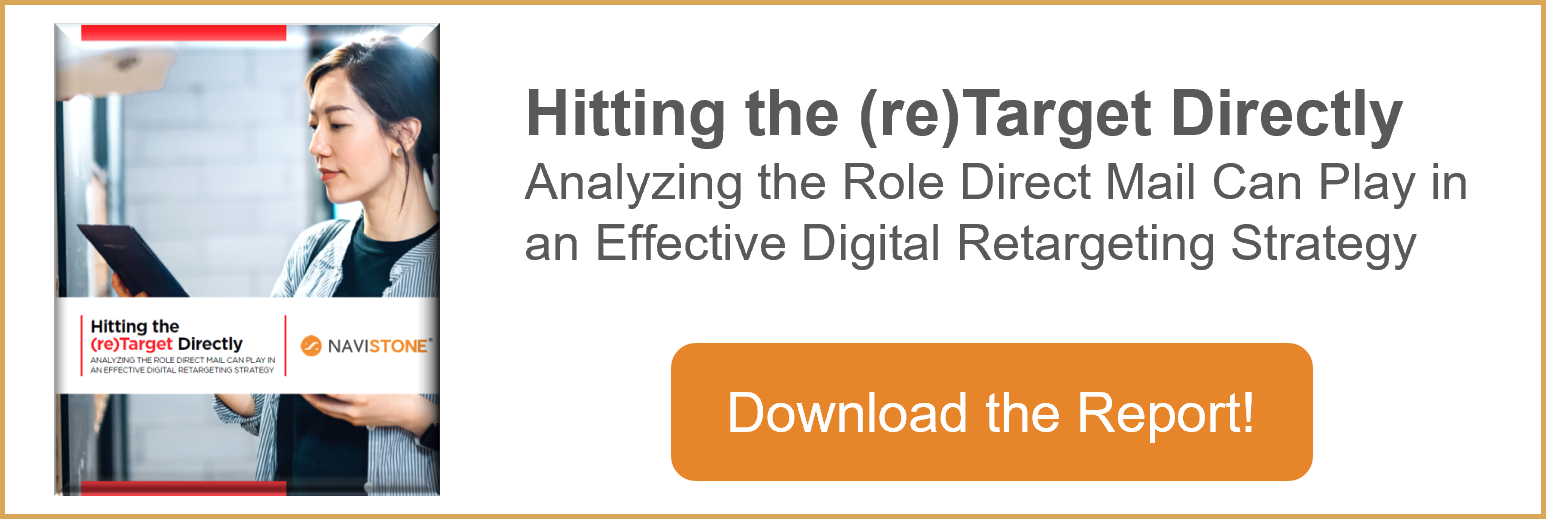
The trick with leveraging intent data to build look-a-like audiences is to act fast. You need to get your message in front of those consumers who are in market, showing intent now and the good news is…you can.
Mirror, Mirror on My Site, Who Does My Best Customer Look Like?
Your best prospects are consumers who know you; those who have transacted with you before (lapsed or inactive customers) and presumably had a positive experience with your brand, or those who have visited your website. Website visitors are showing intent through their browsing behavior or by directly making an inquiry to you about your product or service. Because they know you, when marketing to these consumers at the right time with the right product through the right channel, the likelihood of driving a sale from them is higher than any other type of program.
If these consumers are your best prospects and then subsequently become customers, then it makes sense that the next best prospects would be consumers that look like them, look-a-likes. Look-a-likes are consumers that share similar characteristics and exhibit similar behaviors as those characteristics that define any customer group you are trying to replicate.
Defining Your Best Customer
The process for creating look-a-likes starts first by determining which group of consumers you are trying to replicate. For some brands, the goal is to identify more consumers that act in a similar manner to the brand’s best customers. A best customer can be defined as someone who spends a specific amount or someone who purchases multiple times. For others, the goal may be trying to identify more consumers that act in a similar manner to those customers that just recently purchased from you for the first time – because that is the exact behavior that the brand is trying to replicate. And yet for others, the goal may be to identify consumers that are likely to purchase a specific product or service because that category purchase leads to a higher lifetime value from the customer.
Determining Your Look-a-Like Audience
Once the best customer is identified, we need to understand what that customer “looks like”.
One way a brand may determine what their customer looks like, is through an analysis of demographic, geographic and/or lifestyle data. If you know that your best customer is a female, homeowner, living within 15 miles of a major metropolitan city, the consumers that you prospect should “look” like this too. When using this type of data for prospecting, keep in mind that this data is typically self-reported and that can bring some challenges. What people say and what they do can be different. Every time I renew my driver’s license, I tend to get taller and weigh less. 😊 Next, consider coverage. Think about surveys you’ve received and have been asked to complete. When consumers choose not to provide this information, coverage of a particular data element may be low, and you may be eliminating a qualified prospect from receiving your message. Age is a great example to consider. It may be important for a brand to use an age demographic as one selection criteria. But there is a difference between selecting consumers that are greater than 55 years old and omitting those that are less than 55 years old. The difference is driven by who reported what data and can dramatically impact the volume of consumers you can prospect to. Is it more important to only select 55+ or is it important enough to omit anyone who identified as under 55? It is an important distinction.
Brands may also use past purchase behavior to determine what their best customer looks like. “They” say, past purchase behavior is indicative of future purchase behavior. If I have bought athletic apparel in the past, I am likely to buy athletic apparel in the future. If I have bought cooking appliances and gadgets in the past, I am likely to purchase them again in the future. You can also create an even stronger “view” of your customer by leveraging aggregated purchase behavior across multiple brands to create a comprehensive view of your best customer and replicate that. Your best customer is someone who purchases athletic apparel and running shoes and cooking appliances and gardening tools. This is the behavior to look for in a prospect. Or is it?
When to Use Intent Data for Building Your Look-a-Like Audience
Once a consumer makes a purchase and fulfills a specific need, are they still likely to respond to an ad for that item? This is where intent data comes in to play. Those website visitors who came to your site and browsed for a specific product or service are in the market for that service now. Isn’t that the consumer we want to replicate? We want to market to consumers who are showing the same intent as consumers who are showing intent to transact with us today. Create a profile of these consumers and find other consumers, prospects, that look like them.
Retargeting Look-a-Like Audiences
The trick with leveraging intent data to build look-a-like audiences is to act fast. You need to get your message in front of those consumers who are in market, showing intent now and the good news is…you can. Through traditional and direct mail retargeting you can leverage intent data and retarget to consumers in market within minutes or just days of them showing that intent. Then leverage look-a-like modeling to find more of these consumers. Profile your current website browsers. Use that profile to model and score a broader group of consumers, being sure to get your message in front of the highest scoring look-a-likes. Target look-a-likes based on intent data and watch demand increase.


Lookalike Audiences Enhance customer acquisition by identifying high-potential prospects, boosting response rates, and lowering advertising costs.
Retargeting Postcards Double the performance of your direct mail retargeting.
Amplify Recognize unknown visitors who are actually customers. Add 20-40% to your ESP/CRM campaigns.
IQ Mail Retain customers with personalized, timely messages for those opting out of digital channels.






Comments